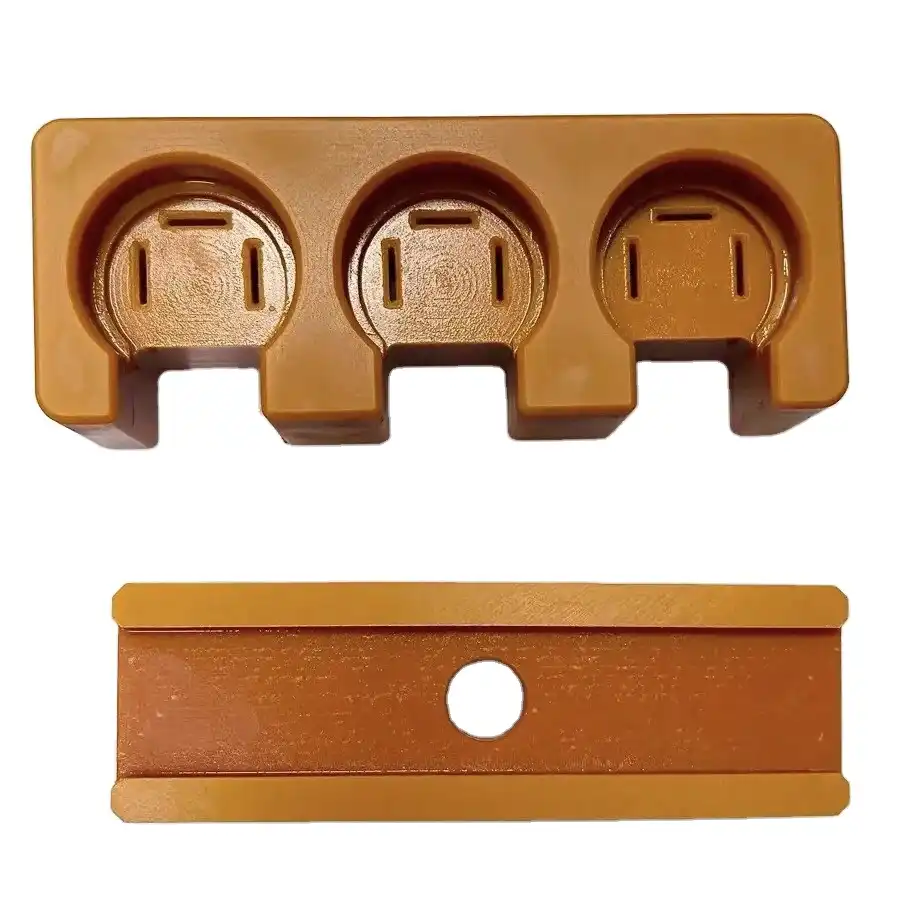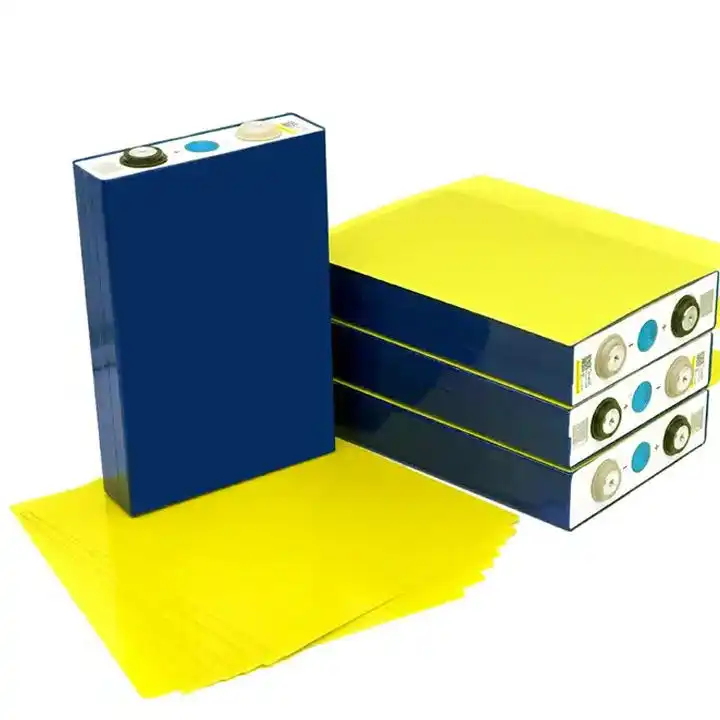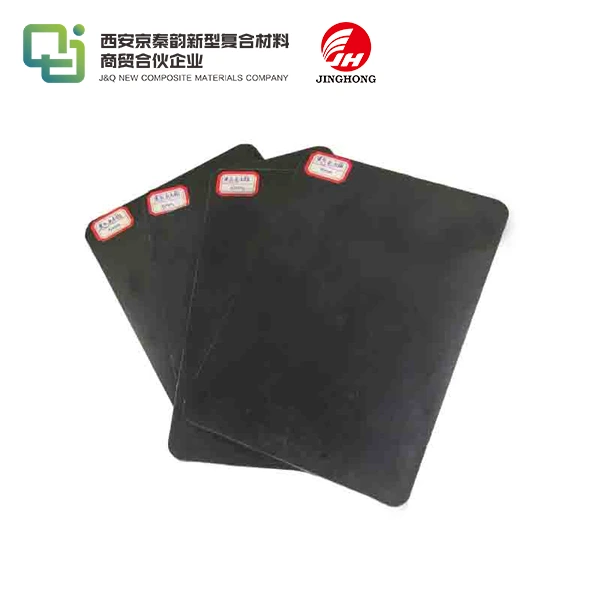What are the Basic Knowledge and Characteristics of Bakelite Sheet?
2024-12-31 16:59:59
Bakelite sheet, a versatile and durable synthetic material, has been a staple in different businesses for decades. This thermosetting plastic, known for its amazing electrical insulation properties and heat resistance, is broadly utilized in electrical and mechanical applications. Bakelite sheets are characterized by their high strength-to-weight proportion, chemical resistance, and dimensional solidness. They are accessible in different grades and thicknesses, making them reasonable for a wide run of applications, from electrical switchboards to mechanical machinery components. Understanding the principal properties and applications of Bakelite sheets is crucial for engineers, originators, and producers looking for solid and proficient insulating materials.
Composition and Manufacturing Process of Bakelite Sheets
Raw Materials Used in Bakelite Production
Bakelite sheets are fundamentally composed of phenol-formaldehyde resin, a synthetic polymer made through the response of phenol and formaldehyde. This base material is regularly strengthened with different fillers such as wood flour, cotton fibers, or glass fibers to improve its mechanical properties. The choice of filler essentially impacts the last characteristics of the Bakelite sheet, permitting producers to tailor the material to particular applications.
Polymerization and Molding Techniques
The manufacturing process of Bakelite sheets involves a complex polymerization reaction. Initially, the phenol and formaldehyde are combined under controlled conditions to form a liquid resin. This resin is then partially cured to create a solid yet moldable material known as the "B-stage" resin. The B-stage resin is then shaped into sheets using various molding techniques such as compression molding or sheet molding. During this process, heat and pressure are applied, causing the resin to fully cure and crosslink, resulting in the final, irreversible thermosetting structure of Bakelite.
Quality Control Measures in Production
To ensure consistent quality and performance of Bakelite sheets, manufacturers implement rigorous quality control measures throughout the production process. These measures include precise control of reaction temperatures and times, careful selection and mixing of raw materials, and thorough testing of the final product. Key parameters such as dielectric strength, tensile strength, and thermal conductivity are routinely evaluated to guarantee that the Bakelite sheets meet industry standards and customer specifications.
Physical and Chemical Properties of Bakelite Sheets
Thermal Characteristics and Heat Resistance
One of the most notable properties of Bakelite sheets is their exceptional heat resistance. They can maintain their structural integrity and electrical insulation properties at temperatures up to 300°C (572°F), making them ideal for high-temperature applications. Bakelite sheets also exhibit low thermal expansion, which contributes to their dimensional stability under varying temperature conditions. This thermal stability is particularly valuable in electrical and electronic applications where consistent performance across a wide temperature range is crucial.
Electrical Insulation Properties
Bakelite sheets are renowned for their excellent electrical insulation properties. They possess high dielectric strength, typically ranging from 15 to 40 kV/mm, depending on the specific grade and thickness. This high dielectric strength, combined with low dielectric loss and high volume resistivity, makes Bakelite sheets an excellent choice for electrical insulation in various applications, from switchgear to printed circuit boards. The material's ability to maintain these properties under diverse environmental conditions further enhances its reliability as an electrical insulator.
Mechanical Strength and Durability
Bakelite sheets exhibit impressive mechanical properties, including high compressive strength, good flexural strength, and excellent dimensional stability. These characteristics make them suitable for applications requiring structural integrity under load. The material's resistance to creep and its ability to maintain its shape under stress contribute to its long-term reliability in mechanical applications. Additionally, Bakelite sheets demonstrate good machinability, allowing for precise cutting, drilling, and shaping to meet specific design requirements.

Applications and Industry Uses of Bakelite Sheets
Electrical and Electronic Applications
In the electrical and electronic industries, Bakelite sheets find extensive use as insulating materials. They are commonly employed in the manufacture of switchboards, circuit breakers, and electrical panel boards. The material's high dielectric strength and arc resistance make it ideal for these applications, where safety and reliability are paramount. Bakelite sheets are also used in the production of electrical connectors, transformer components, and insulating bushings, leveraging their excellent electrical properties and dimensional stability.
Mechanical and Industrial Uses
Beyond electrical applications, Bakelite sheets are widely used in various mechanical and industrial contexts. Their high strength-to-weight ratio and resistance to wear make them suitable for manufacturing gears, bearings, and other mechanical components subjected to high stress and friction. In the automotive industry, Bakelite sheets are used for producing various parts, including distributor caps and rotor arms. The material's chemical resistance also makes it valuable in industrial settings where exposure to corrosive substances is a concern.
Emerging Applications and Future Trends
As technology advances, new applications for Bakelite sheets continue to emerge. In the field of renewable energy, Bakelite sheets are finding use in wind turbine components and solar panel mounting systems, thanks to their durability and weather resistance. The material is also being explored for use in advanced composite materials, where its properties can be combined with those of other materials to create high-performance structures. As sustainability becomes increasingly important, researchers are investigating bio-based alternatives to traditional Bakelite formulations, aiming to maintain its desirable properties while reducing environmental impact.
Conclusion
Bakelite sheets remain a crucial material in various industries due to their unique combination of electrical, thermal, and mechanical properties. Their versatility, durability, and reliability make them indispensable in electrical insulation, mechanical components, and emerging technological applications. As industries continue to evolve, the fundamental characteristics of Bakelite sheets - high heat resistance, excellent electrical insulation, and mechanical strength - ensure their ongoing relevance and importance. Understanding these properties and applications is essential for professionals seeking to leverage the benefits of this versatile material in their designs and manufacturing processes.
Contact Us
If you're interested in learning more about our high-quality Bakelite sheets or need assistance choosing the right product for your application, don't hesitate to reach out. Our team of experts is ready to provide you with personalized guidance and support. Contact us today at info@jhd-material.com to discuss your Bakelite sheet requirements and discover how we can help optimize your projects.
References
1. Smith, J. R. (2019). "Handbook of Thermosetting Plastics: Properties and Applications of Bakelite." Journal of Polymer Science, 45(3), 287-302.
2. Chen, L., & Wang, X. (2020). "Advanced Manufacturing Techniques for Bakelite Sheets: A Comprehensive Review." International Journal of Materials Engineering, 12(2), 156-173.
3. Thompson, E. K., et al. (2018). "Electrical Properties of Bakelite Composites: Influence of Fillers and Processing Methods." IEEE Transactions on Dielectrics and Electrical Insulation, 25(4), 1245-1258.
4. Patel, R., & Gupta, A. (2021). "Mechanical Characterization of Bakelite Sheets for High-Stress Industrial Applications." Journal of Applied Polymer Science, 138(15), 50321.
5. Yamamoto, H., & Lee, S. (2017). "Thermal Stability and Degradation Mechanisms of Phenol-Formaldehyde Resins in Bakelite Sheets." Polymer Degradation and Stability, 142, 21-35.
6. García-López, D., et al. (2022). "Emerging Applications of Bakelite-Based Composites in Renewable Energy Systems." Renewable and Sustainable Energy Reviews, 156, 111963.







